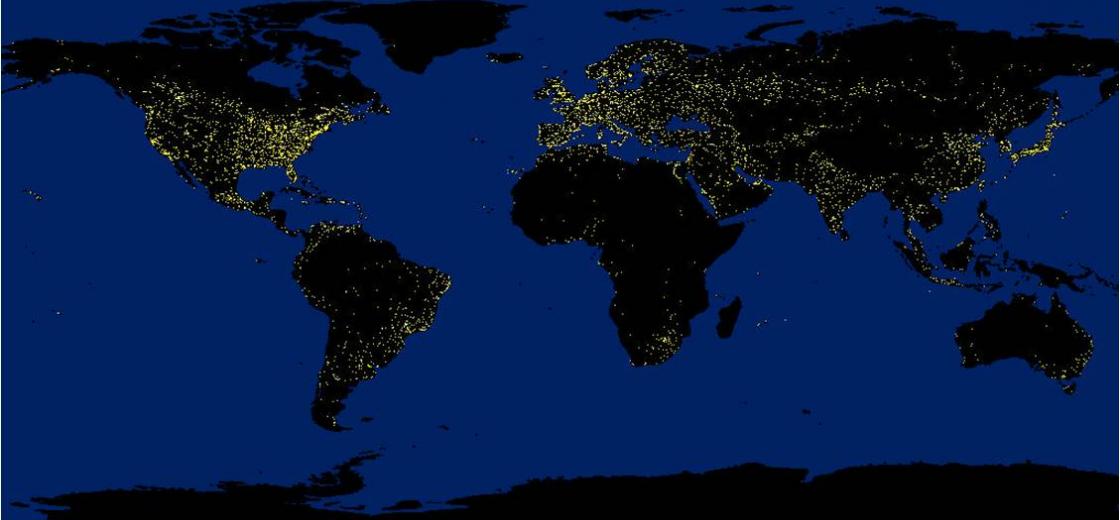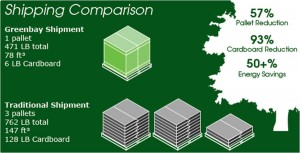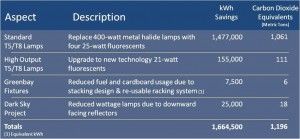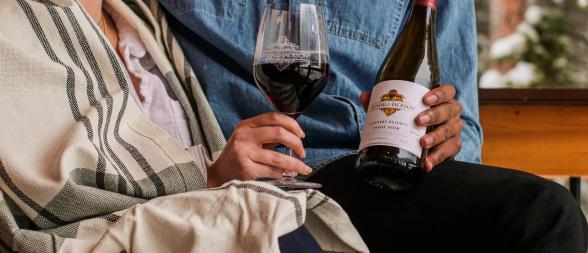
Bright Ideas
Last week we talked in-general about our energy conservation program, but this week we’ll take a deeper dive into our first project – lighting retrofit.
I really wanted to use this project to set our standard for how we approach sustainability. To go beyond just changing out the old, inefficient lights and make the hard choices at every point to minimize environmental impact and maximize efficiency.
It was a great learning experience and a lot of fun. Digging deeper took more time and more thinking, but it was amazing to see how many advancements can be made if you’re committed to being an exhaustive inquisitor.
When we got started, we figured go big or go home – so we called General Electric; they ought to know something about lighting. Over time Kendall-Jackson developed a partnership with GE and Energy Industries – our energy savings engineering company. We even went to GE’s Lighting and Electrical Institute in Cleveland and worked with a couple of engineers late into the night to come up with two custom solutions.
They have this amazing testing warehouse where we set up two “rooms” with different lighting equipment. They even raised the “ceiling” up and down to replicate our buildings. We walked back and forth between the rooms to see what worked and what didn’t. Then we lowered the ceiling, plugged in some different equipment, tweaked this and that, raised it up again and we had another look. Very cool!
Additionally we got access to the newest, most efficient technology for bulbs and ballasts (the power transformer). Only about 1,200 of these new fluorescent bulbs had been sold in the U.S. until we showed up; we installed over 4,000. Using this new technology saves us an additional 155,000 kWh per year from the standard gear—enough to power 25 homes.
Mercury Recycling turned out to be an issue. Fixtures in a work area need to have a clear, protective sheath slid over the bulb for safety reasons in case of breakage. Here’s the rub: turns out that sheath is permanent and prevents the mercury from being recycled when spent bulbs were disposed.
On one hand we conserving energy and associated green house gases (GHG), on the other hand we’re putting mercury into landfills. So, we searched far and wide and eventually found a removable sheath; GE custom manufactured our bulbs to fit this environmental specification.
Next up, we found the Greenbay Lighting Fixture that seriously reduced shipping waste compared to others. They designed the fixtures so they stack more efficiently and use fewer trucks to ship them. Pallets that fixtures ship on are normally wrapped with cardboard, strapped down and shrink wrapped with plastic — that’s a lot of waste. Greenbay’s got this ingenious metal rack that allows you remove the fixtures, collapse the racks and ship them back for reuse — even better than recycling.
Most fixtures are painted white – why? It doesn’t increase the quantity or quality of the light reflected. We’re just used to them being painted, so manufactures paint them. It’s no big deal until 10 years from now when we retrofit the fluorescents with LED fixtures and we can’t recycle our fixtures. Greenbay doesn’t paint their fixtures – no brainer right?
Lastly, we followed the International Dark-Sky Associations (IDA) protocols for exterior lighting retrofits to reduce light emissions beyond our borders or into the sky. Sure, it’s cool to help reduce light pollution, but we also save energy and associated GHGs. By using a reflector to get more light on the ground, we can use lower wattage bulbs. The IDA says that $2.2 billion is wasted each year in the U.S. alone. Our outdoor lighting is conserving about 25,000 kWh per year—enough to power about four homes.
At the end of the day this project did wind up being our model for future projects: dig deeper, try harder and sometimes make choices that cost more than going the standard route. We did the very best job possible and are now saving loads of money because of our initiative.
Got any bright ideas for us?







